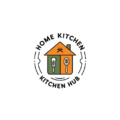When it comes to kitchen tools, scratches can be more than just an aesthetic issue. They can affect the performance, longevity, and hygiene of your tools, making them less efficient and harder to clean. Whether you have a favorite chef’s knife, a set of non-stick pans, or a well-loved wooden cutting board, scratches can quickly make your kitchen tools look worn and dirty. Not only are scratches unsightly, but they can also lead to contamination or compromise the food you prepare.
In this guide, we’ll explore simple and effective ways to prevent scratches on your kitchen tools. By applying these easy-to-follow tips, you can keep your kitchen tools looking great, performing at their best, and lasting longer.
Why Scratches Are Harmful to Kitchen Tools
Impact on Appearance and Aesthetics
Scratches on your kitchen tools can quickly make them look worn, old, and less appealing. Whether it’s your shiny new knives or your favorite non-stick frying pan, visible scratches can detract from the overall appearance of your kitchen. While some scratches may seem harmless at first, over time, they can accumulate, making your tools look dull and less cared for.
For example, non-stick cookware that gets scratched can lose its shine, while wooden tools or cutting boards can develop unsightly grooves or dents. These blemishes can make it harder to enjoy using your kitchen tools, especially when cooking for family or guests.
Compromised Hygiene
Scratches, particularly on tools like wooden cutting boards, can create grooves that trap food particles, moisture, and bacteria. Over time, this can lead to hygiene issues, as Healthy Cooking Gadgets the tools become more difficult to clean thoroughly. Even on non-stick pans, scratches can trap food remnants, making it easier for bacteria to build up.
When tools like knives or cutting boards are scratched, it becomes harder to maintain a sanitary kitchen environment. Scratched cookware can even lead to contamination when cooking, making food unsafe to eat.
Reduced Performance and Durability
Scratches not only affect the appearance and hygiene of your kitchen tools but also impact their performance. For instance:
- Knives: Scratches along the edge can cause dullness and make it harder to cut through food, requiring more force.
- Non-stick Pans: Scratched non-stick surfaces lose their coating, making them less effective at preventing food from sticking. This can lead to uneven cooking and more difficult cleanup.
- Wooden Tools: Scratches can make wooden tools like spoons or cutting boards weaker, leading to further cracking or splintering over time.
Over time, the material in the scratched areas can break down, causing more wear and tear, leading to faster deterioration of the tool.
Types of Kitchen Tools Prone to Scratches
Cutting Tools (Knives, Peelers, Graters)
Cutting tools are particularly vulnerable to scratches, especially around the blade edge. Improper storage, such as throwing knives in a drawer without protection, can cause the blade to come into contact with hard surfaces, leading to nicks and scratches. Over time, these imperfections can affect the sharpness and cutting ability of your knives.
To avoid this, always store knives properly and ensure they are not rubbing against other utensils or tools.
Cookware (Non-stick Pans, Pots, and Cast Iron)
Cookware, particularly non-stick pans, is prone to scratches. Non-stick surfaces are delicate, and using metal utensils or stacking pans without protective layers can easily lead to scratches that damage the coating. This not only compromises the performance of the cookware but also shortens its lifespan.
Even cast iron pans, while durable, can develop scratches if not seasoned or handled properly, leading to rust and food sticking.
Wooden Kitchen Tools (Cutting Boards, Spoons)
Wooden kitchen tools, such as cutting boards, spoons, and rolling pins, are particularly susceptible to scratches. When improperly stored or used on hard surfaces, they can develop deep grooves and cracks that compromise their integrity. The more these scratches accumulate, the harder it becomes to clean the tools properly, and they may even become prone to bacteria buildup.
Glass and Ceramic Tools (Bowls, Plates, etc.)
Glass and ceramic tools like bowls, plates, and baking dishes can also scratch during everyday use, especially when stacking them or using abrasive cleaning tools. These materials are less durable than metal or wood and can be more prone to chipping and scratching when mishandled.
Tips for Preventing Scratches on Kitchen Tools
Proper Storage Techniques
- Knives: Always store knives in a knife block, on a magnetic strip, or with protective covers to prevent them from coming into contact with hard surfaces. Avoid throwing knives in a drawer where they can get scratched or dull.
- Non-stick Cookware: When stacking non-stick pans, place a layer of paper towels or silicone protectors between them to prevent scratches. Never stack metal utensils directly on non-stick surfaces.
- Cutting Boards: Store cutting boards upright or flat to avoid pressure on the surfaces, which can lead to warping or scratching.
Use Appropriate Cutting Surfaces
To protect your knives and cutting boards, avoid cutting directly on countertops or metal surfaces. Always use a dedicated cutting board made of softer materials like wood, bamboo, or plastic. These surfaces are less likely to dull your knives and are less damaging to the tools.
When selecting a cutting board, opt for wood or bamboo rather than glass, marble, or granite. These harder materials can cause scratches on your knives and are less gentle on your kitchen tools.
Careful Handling and Cleaning
- Knives: Always hand wash knives with mild detergent and dry them immediately to prevent water spots, rust, and damage to the blade. Avoid placing knives in the dishwasher as it can cause scratches to both the knife and the dishwasher itself.
- Non-stick Cookware: Avoid using metal utensils on non-stick cookware. Opt for silicone, wood, or plastic utensils instead, as they are much gentler on the non-stick coating.
- Wooden Tools: Regularly oil and treat wooden tools with mineral oil to prevent drying out and cracking. This also helps maintain their scratch-resistant properties.
Regular Maintenance and Care
- Sharpening Knives: Regular sharpening helps maintain the blade’s edge, reducing the need for excessive force when cutting, which could cause scratches.
- Seasoning Cast Iron: Properly seasoning cast iron cookware helps maintain its non-stick properties and prevents rust, which can lead to scratches and further damage.
Avoiding Overstacking and Scratching
Be mindful when stacking dishes, pots, and pans in your cabinets. Overstacking can cause scratches on cookware, plates, and bowls. Use drawer dividers or organizers to store your kitchen tools safely, ensuring they don’t rub against each other.
Choosing the Right Kitchen Tools to Minimize Scratches
Invest in High-Quality, Scratch-Resistant Tools
When shopping for kitchen tools, invest in high-quality options designed to resist scratches:
- Non-stick Cookware: Look for PFOA-free, scratch-resistant coatings for long-lasting durability.
- Knives: Opt for knives made from high-carbon stainless steel for sharpness and durability. These knives are resistant to dulling and scratching and can last longer if properly cared for.
Selecting Durable Materials
Materials like stainless steel, high-density plastic, and silicone are more resistant to scratching. When purchasing kitchen tools, always research the material properties to ensure they are durable and scratch-resistant. This will help prevent damage over time and ensure your tools perform at their best.
Look for Scratch-Resistant Coatings or Finishes
Many modern kitchen tools come with scratch-resistant coatings or finishes. Whether it’s a non-stick pan or a set of knives, choosing products with these added protections will help preserve their integrity and extend their lifespan.
Natural and DIY Solutions for Maintaining Kitchen Tools
DIY Solutions for Non-stick Cookware
To keep non-stick cookware in good condition, create a safe, non-toxic surface by regularly cleaning with a gentle solution of baking soda and water. This can help remove food particles without damaging the non-stick coating.
Wooden Tool Maintenance
To keep wooden tools in great shape, make your own wood conditioner using mineral oil and beeswax. Apply it regularly to prevent scratches and maintain the wood’s moisture balance.
Restoring Stainless Steel and Other Metals
For stainless steel tools, you can restore their shine and prevent scratches by cleaning them with a mixture of vinegar and water. This solution can also help remove stubborn stains and protect the surface from future damage.
When to Replace Kitchen Tools Due to Scratches
Signs That Tools Need Replacing
While minor scratches can be repaired, deep, severe scratches may affect the functionality of your kitchen tools. If a knife has a significant amount of edge damage, or if a non-stick pan is so scratched that the coating is peeling, it’s time to replace the tool.
Benefits of Replacing Worn Tools
Replacing worn or scratched tools not only improves cooking performance but also ensures that your kitchen is safe and hygienic. Investing in new, quality tools will enhance your cooking experience and prevent further frustration.
FAQ Section
Q1: Can scratches on my non-stick pan affect its performance?
Answer: Yes, scratches can compromise the non-stick coating, making the pan less effective and more prone to further damage. It’s best to avoid metal utensils on these pans.
Q2: How can I prevent scratches on my wooden cutting board?
Answer: Store your wooden cutting board properly, and regularly treat it with mineral oil to keep it hydrated and resistant to scratches.
Q3: Are there any non-stick pans that are scratch-resistant?
Answer: Yes, some high-quality non-stick pans have scratch-resistant coatings. Look for pans labeled as PFOA-free or with reinforced non-stick coatings.
Q4: Is it safe to use a scratched knife?
Answer: If a knife has deep scratches on the blade, it can affect its sharpness and functionality. Consider getting it professionally sharpened or replaced.
Q5: How often should I oil my wooden kitchen tools?
Answer: You should oil wooden tools every 1-2 months, or more frequently if they start looking dry or rough.
Q6: What’s the best way to clean my kitchen tools without scratching them?
Answer: Always follow manufacturer guidelines, hand wash with mild detergent, and avoid abrasive scrubbers. Use soft cloths and non-abrasive pads for cleaning.
Conclusion
Prevention is key to maintaining the longevity and performance of your kitchen tools. Regular cleaning, proper storage, and using the right materials are essential for avoiding scratches. By following the simple tips outlined in this guide, you can keep your kitchen tools looking great and performing at their best for years to come.
Start taking care of your kitchen tools today and enjoy the benefits of longer-lasting, high-performing kitchen essentials!

